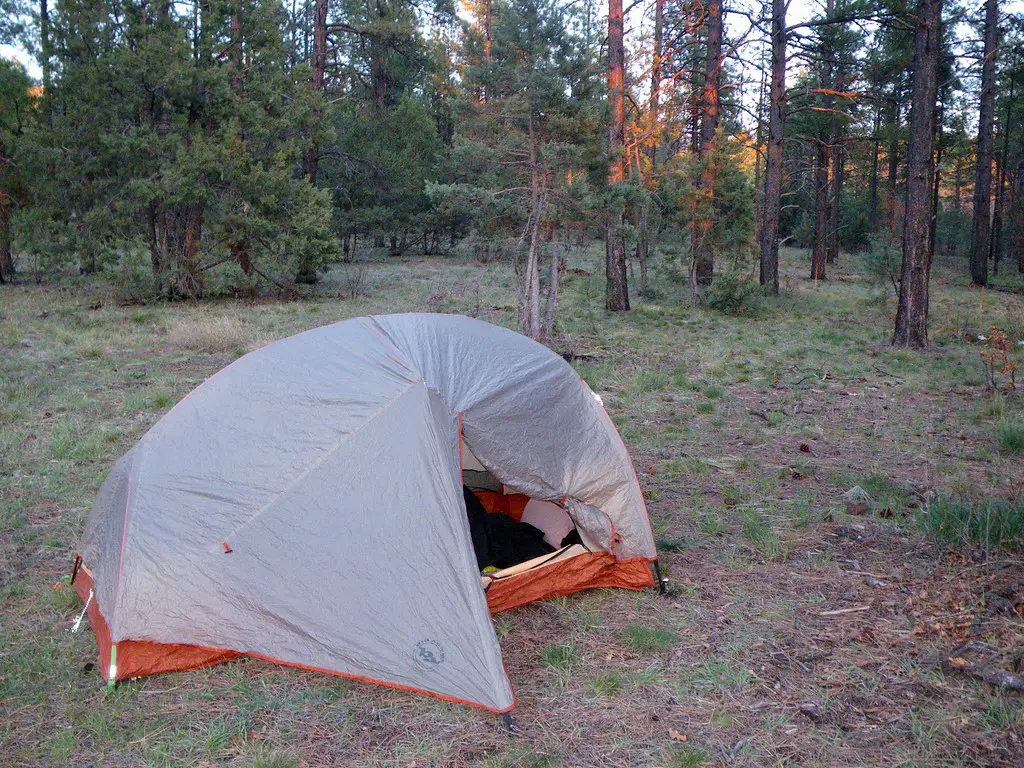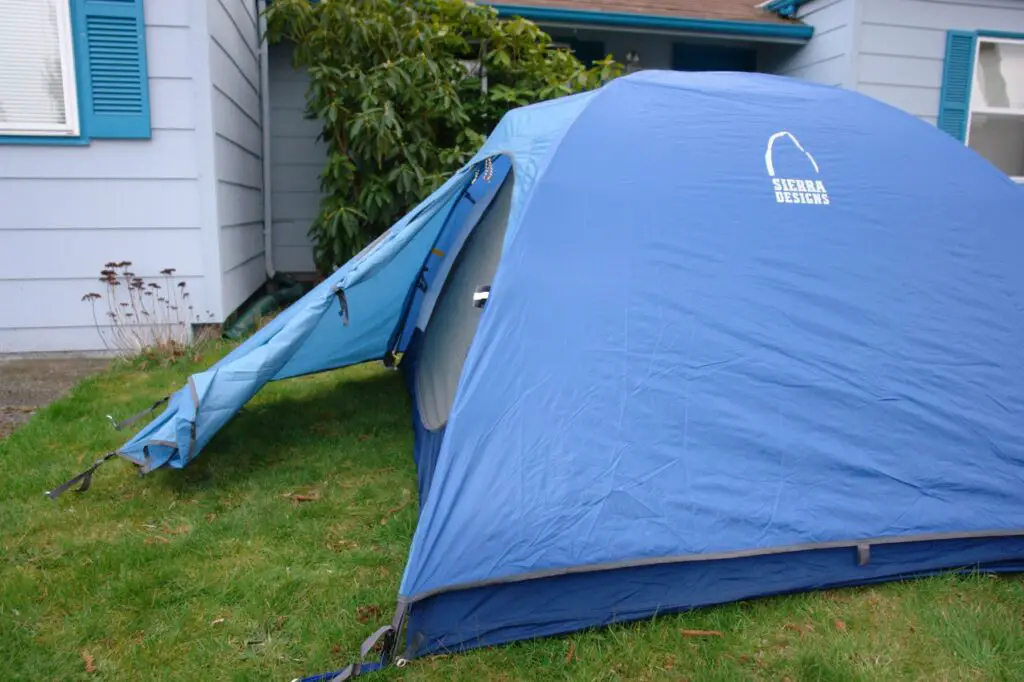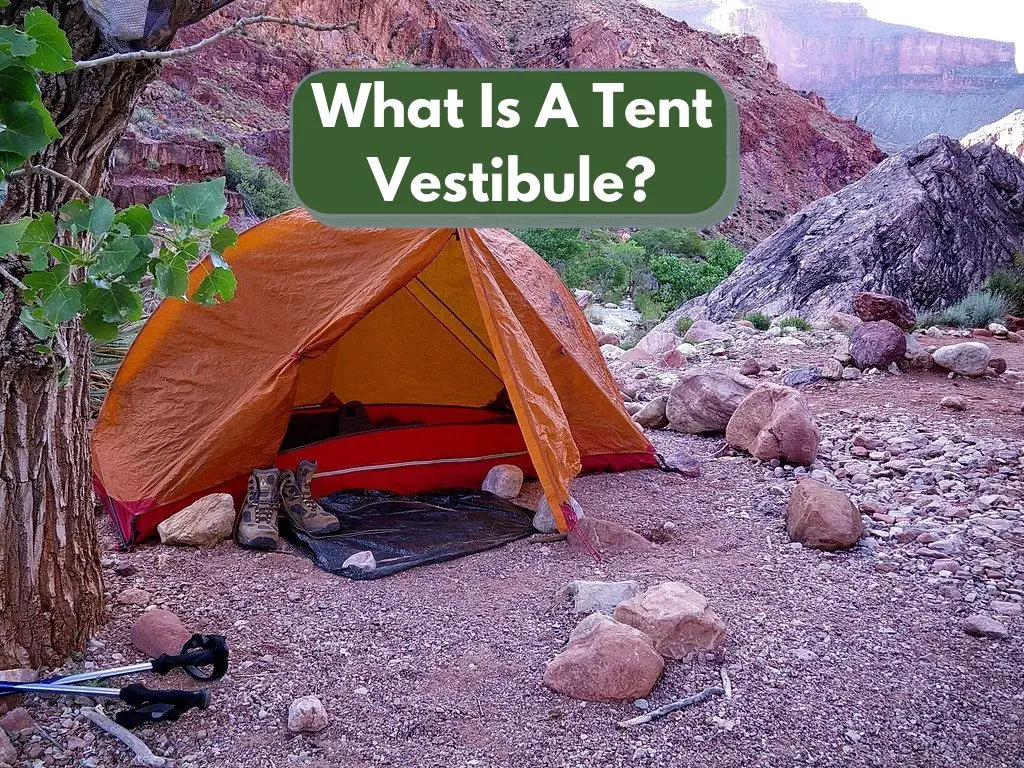A tent vestibule is an often overlooked piece of camping gear that can make your life a lot easier on your next camping trip.
So what is a tent vestibule? A tent vestibule is an extension of your tent that goes over the door, providing a covered area for you to store your gear.
Think of a vestibule as a mudroom for your tent.
This article will discuss the benefits of having a vestibule and whether or not you need one.
Tent Vestibule Types

There are three common styles of vestibules for tents: front, side, and add-on versions.
Front Vestibules
A front vestibule is great for storing gear that you need quick access to, such as your shoes or a small cooler.
You can also use it as a place to cook in bad weather, since it will protect your stove from the elements.
One downside of a front vestibule is that it can block the view from your tent door, but the upside is that they can be very spacious, allowing you to store more gear than you would in a side vestibule.
Side Vestibules
Side vestibules are less common, but they offer some advantages over front versions.
They don’t block the view from your tent door and they provide more storage space than a front vestibule, and can also serve as a second entrance to your tent.
However, they can be slightly more difficult to set up than a front vestibule.
Add-On Vestibules
If your tent doesn’t come with a vestibule, don’t worry – you can buy an add-on vestibule.
These attach to the outside of your tent and provide all the benefits of a built-in vestibule.
The only downside is that they can be a little more expensive than tents with built-in vestibules.
Do You Need A Tent Vestibule?
Whether or not you need a tent vestibule depends on your camping style and the conditions you’ll be camping in.
If you only camp in good weather, then you probably don’t need a vestibule.
But if you camp in bad weather or like to hike long distances to get to your campsite, then a vestibule can be very helpful.
Ultimately, it’s up to you whether or not you want to invest in a tent vestibule. But given how affordable they are, there’s no reason not to add one to your camping gear list.
How To Build A DIY Tent Vestibule
If you’re feeling handy, you can build your own tent vestibule.
Here’s what you’ll need:
- An old tarp
- Some rope
- A few tent stakes
DIY Vestibule Instructions:
- First, stake out the corners of your desired area using the tent stakes.
- Next, drape the tarp over the top of the ropes and stake it down at the corners.
- You may need to weight down the edges of the tarp with rocks or logs if it’s windy.
- And that’s it! You now have a homemade tent vestibule that will keep your gear dry and protected from the elements.
Alternatives To Vestibules
If you don’t want to use a vestibule, there are other options for storing your gear.
One option is to use a tarp. You can set up a tarp over your tent door to create a covered area for your gear.
Another option is to use an extra large stuff sack. These sacks are big enough to fit all of your gear and can be hung from a tree or other object near your campsite.
Whichever method you choose, make sure you have some way to keep your gear dry on your next camping trip. Otherwise, you’ll be in for a miserable time!
How Big Should Your Vestibule Be?

The size of your vestibule should be based on how much gear you need to store.
If you only need to store a few items, then a small vestibule will suffice.
But if you have a lot of gear, or if you want to use your vestibule as a cooking area, then you’ll need a larger one.
Just make sure that the size of your vestibule is appropriate for your needs. Otherwise, you’ll either be cramped for space or wasting money on unnecessary room.
How To Cook In A Tent Vestibule
If you’re using a front vestibule, cooking in it is easy.
Just set up your campfire cooking kit or stove inside the vestibule and cook as normal.
If you’re using a side vestibule, things are a little bit more complicated.
You’ll need to set up your stove outside of the vestibule, and then carry your food and utensils into the vestibule to eat.
This can be cumbersome, so it’s probably not worth trying to cook in a side vestibule.
The main thing is that you have to ensure that the vestibule area is well ventilated, as carbon monoxide poisoning can occur if there is not fresh air flowing into the cooking area.
Wrapping Up Our Tent Vestibule Guide
So there you have it! The benefits and drawbacks of using a tent vestibule, as well as how big of one you should consider.
The convenience added by having a tent vestibule in bad weather can easily pay for itself in one camping trip!
Do you use a vestibule, and if so, what style? Let us know in the comments below.
Check out our other useful camping guides while you’re here:
While you’re here, check out our other great camping guides:

